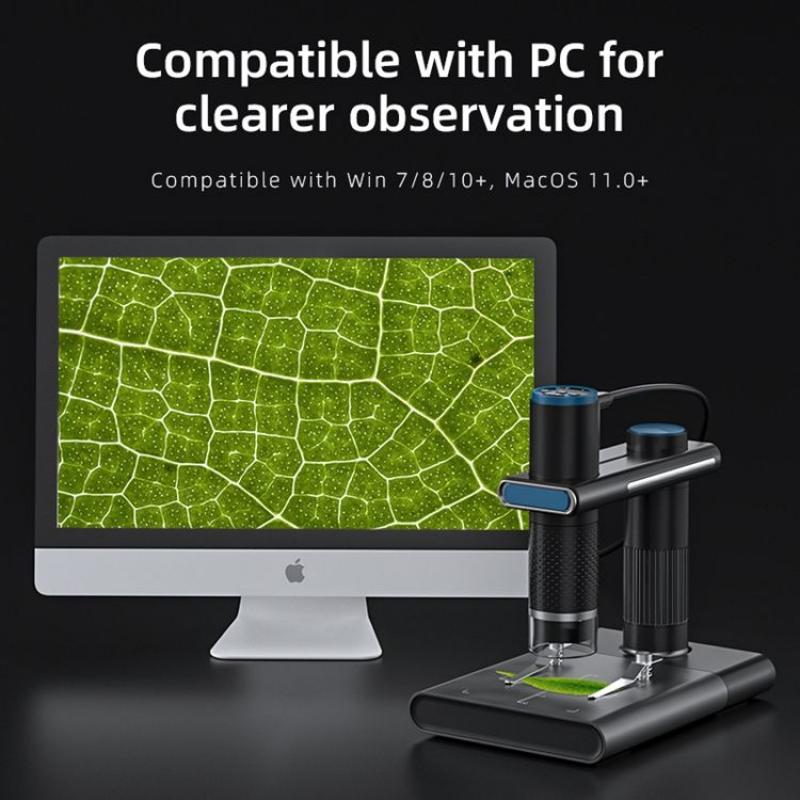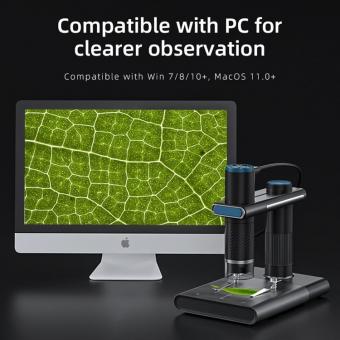Are Viruses Visible With A Light Microscope?
No, viruses are generally not visible with a light microscope due to their small size, which is typically below the resolution limit of light microscopes.
1、 - Size of viruses

Viruses are not visible with a light microscope due to their extremely small size. The size of viruses typically ranges from about 20 to 400 nanometers, making them much smaller than the wavelength of visible light. This means that they cannot be resolved using a standard light microscope, which has a limited resolution of around 200 nanometers.
However, advancements in microscopy techniques have allowed scientists to visualize viruses using electron microscopes, which have much higher resolution capabilities. With the use of electron microscopes, researchers have been able to capture detailed images of viruses, providing valuable insights into their structure and behavior.
It's important to note that the latest point of view on this topic emphasizes the limitations of light microscopy in visualizing viruses. While light microscopes are invaluable for studying larger cells and microorganisms, they are not suitable for directly observing viruses. Instead, electron microscopy and other advanced imaging techniques are essential for studying viruses at the nanoscale level.
In conclusion, viruses are not visible with a light microscope due to their small size, and electron microscopy is the preferred method for visualizing and studying viruses in detail.
2、 - Light microscope limitations

The limitations of a light microscope include its inability to visualize objects smaller than the wavelength of visible light, which is approximately 400-700 nanometers. Viruses, being much smaller than this limit, are not visible with a standard light microscope. This has been a long-standing limitation in the field of virology, as researchers have been unable to directly observe viruses using traditional light microscopy techniques.
However, recent advancements in microscopy technology have led to the development of super-resolution microscopy techniques, such as stimulated emission depletion (STED) microscopy and structured illumination microscopy (SIM), which have enabled scientists to visualize viruses at the nanoscale level. These techniques use various methods to overcome the diffraction limit of light, allowing for the visualization of structures as small as a few tens of nanometers.
Additionally, the use of fluorescent labeling and immunostaining techniques has further enhanced the ability to visualize viruses using light microscopy. By tagging viral components with fluorescent markers, researchers can track the movement and behavior of viruses within host cells, providing valuable insights into viral replication and pathogenesis.
In conclusion, while traditional light microscopy has limitations in visualizing viruses due to their small size, recent advancements in microscopy technology and labeling techniques have expanded our ability to study viruses at the nanoscale level. These developments have significantly contributed to our understanding of viral biology and pathogenesis.
3、 - Electron microscope capabilities

Viruses are generally not visible with a light microscope due to their small size, which is typically below the resolution limit of light microscopes. The resolution of a light microscope is limited by the wavelength of visible light, making it difficult to distinguish individual viruses, which are often smaller than the wavelength of visible light.
However, with the advancement of technology, there have been some recent developments in light microscopy techniques that have allowed for the visualization of some larger viruses. For example, super-resolution microscopy techniques such as structured illumination microscopy (SIM) and stimulated emission depletion (STED) microscopy have been used to visualize certain viruses at the nanoscale level. These techniques have pushed the resolution limits of light microscopy and have enabled researchers to study viruses in more detail than was previously possible.
On the other hand, electron microscopes have long been the primary tool for visualizing viruses. Electron microscopes use a beam of electrons instead of light to achieve much higher resolution images, allowing for the visualization of individual viruses and their internal structures. This capability has been crucial for understanding the morphology and behavior of viruses, as well as for studying their interactions with host cells.
In conclusion, while recent advancements in light microscopy have allowed for the visualization of some larger viruses, electron microscopes still remain the primary tool for studying viruses due to their superior resolution capabilities. However, it's important to note that the field of microscopy is constantly evolving, and future developments may further enhance our ability to visualize viruses using light microscopy techniques.
4、 - Viral structure

Are viruses visible with a light microscope?
Traditionally, viruses have been considered too small to be visible with a light microscope, which has a limited resolution of around 200 nanometers. However, recent advancements in microscopy techniques, such as super-resolution microscopy, have allowed scientists to visualize some viruses using light microscopes. These techniques can achieve resolutions below the diffraction limit, making it possible to observe certain larger viruses directly.
It's important to note that not all viruses are visible with a light microscope, as many are still too small to be resolved using this method. Additionally, the ability to visualize viruses with a light microscope depends on factors such as the specific virus being studied, the sample preparation techniques, and the capabilities of the microscope being used.
In summary, while some viruses can now be visualized using advanced light microscopy techniques, many viruses remain too small to be directly observed with a light microscope. Electron microscopy, with its higher resolution, remains the primary method for visualizing the detailed structure of most viruses. However, ongoing advancements in microscopy technology may continue to expand the capabilities of light microscopy in the study of viral structure.






























There are no comments for this blog.